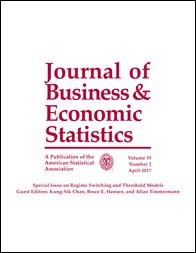
Koopman, S., Lucas, A. and Schwaab, B. (2012). Dynamic Factor Models With Macro, Frailty and Industry Effects for U.S. Default Counts: The Credit Crisis of 2008 Journal of Business and Economic Statistics, 30(4):521--532.
-
Affiliated authors
-
Publication year2012
-
JournalJournal of Business and Economic Statistics
We develop a high-dimensional, nonlinear, and non-Gaussian dynamic factor model for the decomposition of systematic default risk conditions into latent components for (1) macroeconomic/financial risk, (2) autonomous default dynamics (frailty), and (3) industry-specific effects. We analyze discrete U.S. corporate default counts together with macroeconomic and financial variables in one unifying framework. We find that approximately 35% of default rate variation is due to systematic and industry factors. Approximately one-third of this systematic variation is captured by the macroeconomic and financial factors. The remainder is captured by frailty (40%) and industry (25%) effects. The default-specific effects are particularly relevant before and during times of financial turbulence. We detect a build-up of systematic risk over the period preceding the 2008 credit crisis. This article has online supplementary material. {\textcopyright} 2012 American Statistical Association.